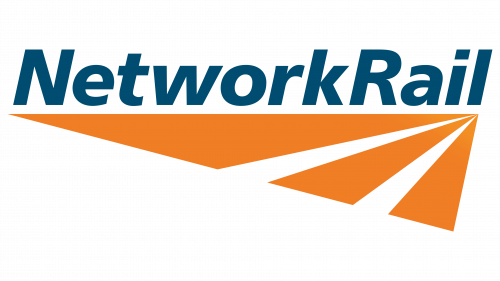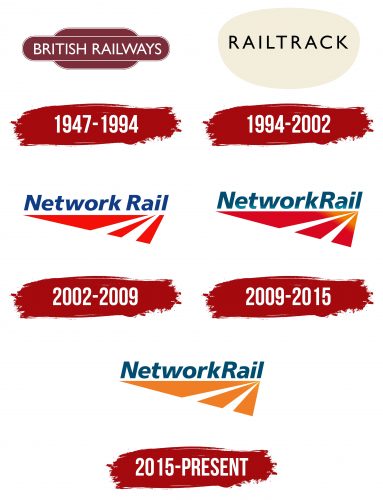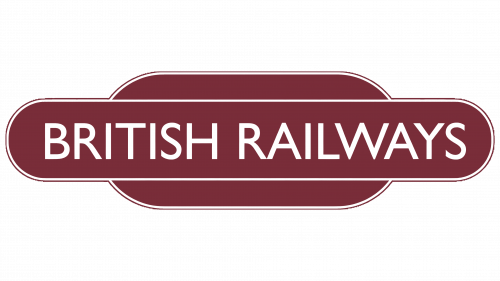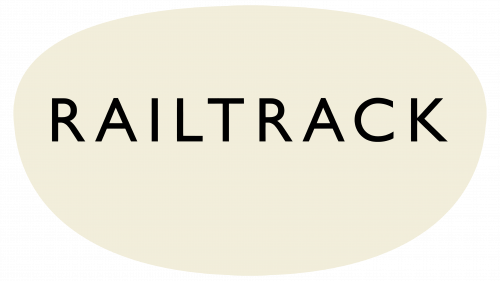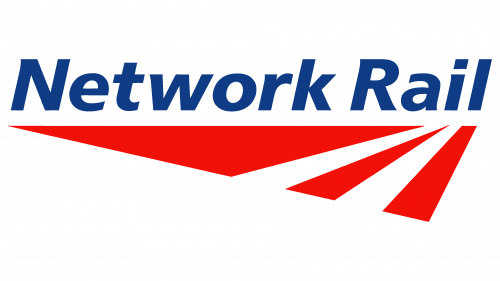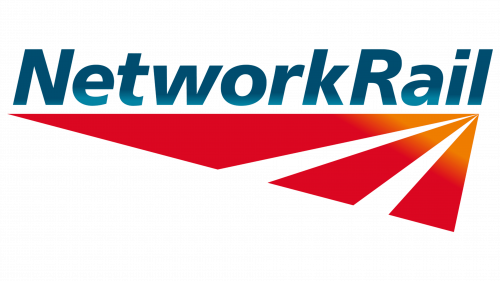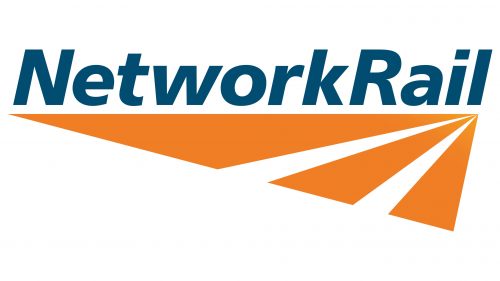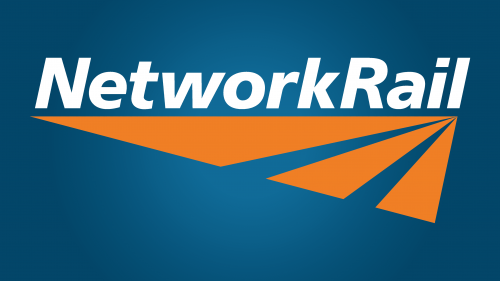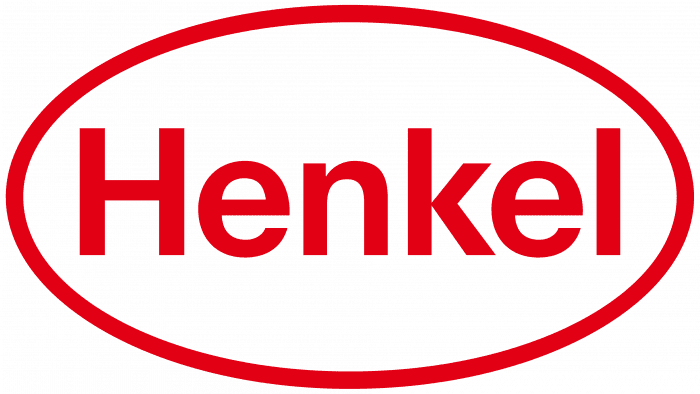The Network Rail logo effectively fulfills its purpose: it conveys the seriousness and reliability of the company while remaining easy to understand. Despite its apparent simplicity, the emblem exudes a sense of grandeur, as it is associated with almost the entire railway network of the United Kingdom.
Network Rail: Brand overview
Network Rail’s history starts in the older era of the British railway system. The British government nationalized the country’s railways in 1947 when multiple private businesses were combined into British Railways (later called British Rail).
Until 1994, when John Major’s Conservative administration started privatization, British Rail managed the railway network and ran the train services. As a result of this process, train operations and infrastructure management were split off.
Railtrack was founded in 1994 to manage the railway network in the United Kingdom. Shares of the privately held Railtrack corporation were traded on the London Stock Exchange.
However, Railtrack experienced several significant problems throughout its managerial tenure. The business was criticized for not investing enough in infrastructure and for having safety issues. The 2000 Hatfield rail disaster was an especially serious blow brought on by a broken rail. Due to this incident, the network had to undergo lengthy inspections and repairs, which caused serious delays and financial losses.
In October 2001, Railtrack was placed under railway administration due to financial issues and a decline in public trust. The corporation effectively went bankrupt due to the government’s refusal to give more funds.
The new entity appeared then. The organization was founded in 2002 as a limited liability company (not-for-dividend). Its objective was to replace Railtrack in managing the railway network in the United Kingdom.
The enterprise formally started operating on October 3, 2002. It assumed ownership of over 20,000 miles of tracks, 40,000 bridges and viaducts, hundreds of tunnels, signals, and level crossings.
Rebuilding public confidence in the railway system and enhancing its dependability and safety were the primary goals of the company’s early years of existence. The firm made significant financial investments in track, signaling, and station renovations as part of its infrastructure modernization.
The new entity’s initial business plan, presented in 2003, called for £26 billion in investments spread over five years. The objectives of this plan were to lower infrastructure maintenance costs and improve performance.
2004 saw a significant restructuring of the organization. Track maintenance had been contracted out to contractors until the new company acquired direct control. This choice was made with cost-cutting and higher-quality output in mind.
One of the busiest train lines in the UK, the West Coast Main Line, had a significant modernization project that was finished in 2006 by the new firm. The speed and dependability of services connecting London, Birmingham, Manchester, and Glasgow were greatly increased by this £9 billion undertaking.
Central authority for a large chunk of the nation’s railway network was centralized in 2008 when the company constructed a new National Operations Centre in London.
The organization unveiled a new plan in 2010 to boost productivity and cut expenses further. This plan called for spending reductions of 21% over five years.
2012 marked the triumphant conclusion of the London Olympic preparations. During this significant international event, the enterprise ensured transportation functioned smoothly.
2014 saw a major shift in the organization’s position. Once categorized as a public sector organization, the company’s debt was included in the UK’s national debt.
Significant projects occurred in 2015 and 2016, including electrifying the Great Western Main Line and refurbishing London Bridge station.
The new firm started a large-scale initiative to automate the railway network in 2017. The goal of this project, dubbed “Digital Railway,” was to deploy the European Train Control System (ETCS) on important lines and update signaling systems. The long-term initiative was designed to entail investments totaling several billion pounds. Digitization was anticipated to boost train operations’ dependability, safety, and capacity on the railroad.
The Great Western Main Line’s large electrification project faced considerable hurdles in 2018. The public and the government disapproved of the project because it greatly overshot its budget and schedule. Consequently, the firm was compelled to reevaluate its plans for electrification on more routes and concentrate on more economical alternatives.
2019 saw significant alterations to the organization’s management structure. The corporation initiated decentralization, which divided its activities into five regions: Scotland, Eastern, North West and Central, Southern, Western and Wales, and Western. Each region was granted more autonomy for managing local infrastructure and making decisions. This action increased operational effectiveness and better served local needs.
In 2020, the company made a concerted effort to improve the sustainability of train transportation. The business declared that by 2030, all railway infrastructure will be powered by renewable energy sources. Pilot programs were started to employ solar panels at train stations and alongside tracks.
One of the main train lines that connects London to the northeast of England and Scotland is the East Coast Main Line, and the company started a significant modernization project on this line in 2021. The project involved expanding the route’s capacity, modernizing signaling systems, and improving track infrastructure. These upgrades were anticipated to shorten travel times and improve service dependability.
In 2022, the organization continued its efforts to make the railway network more accessible to travelers with impairments. Several initiatives were started to construct ramps and install elevators at stations around the nation. The corporation has also invested in developing innovative technologies to increase railway safety, such as train approach warning systems and infrastructure condition monitoring.
Despite several obstacles and adjustments to meet the business’s and the public’s shifting needs, the company persisted in expanding and updating the British rail system.
Meaning and History
What is Network Rail?
It is a British public company that owns, operates, and maintains rail infrastructure in the UK. This includes tracks, signals, bridges, tunnels, crossings, and key stations. The company is responsible for ensuring the safe and efficient operation of the rail network, managing timetables, and coordinating infrastructure maintenance and modernization projects. It works closely with the train operators who run passenger and freight services on the network.
1947 – 1994
The predecessor of Network Rail was British Railways, whose trains transported millions of passengers across the country daily. The shape of its logo was meticulously designed. The oval silhouette, slightly elongated horizontally, is framed by a double line, evoking a sense of completeness. This geometric figure hints at movement and continuous progress, reflecting the essence of the railway itself—long tracks stretching from one end of the country to the other.
The central oval sits between two broad bands with rounded outer corners. The smooth lines emphasize the stability and reliability of the transportation system, while the emblem’s overall massiveness conveys the era when trains were symbols of industrial power. The logo’s three “layers” are colored in a deep red wine, which evokes associations with British culture, resilience, and confidence.
Set against the rich maroon background, the company’s white name stands out prominently in the center of the oval. The text uses a clean, minimalist font with no decorative elements, highlighting the company’s commitment to practicality and simplicity. The letters are composed of uniform lines of equal thickness, giving the logo a formal appearance. Yet, the smooth curves soften the text’s shape, preserving a sense of classic charm.
1994 – 2002
In 1994, the government decided to privatize British Railways, creating Railtrack, a group of companies. Its logo resembles a 3D beige bubble—an oval shape with a convex top. This massive figure reflects the scale of the organization, which owns almost the entire railway infrastructure of the United Kingdom, including bridges, tunnels, tracks, and signaling systems.
At the center of this vast space is the name “Railtrack,” symbolizing that the company is at the forefront of a large system. The lettering uses the same font as the British Railways emblem. Its clean design conveys the brand’s core values: reliability, precision, and modernity.
The minimalist font style creates a sense of formality and professionalism, while the lack of serifs makes the text easy to read. The clean lines symbolize order and structure, aligning with the character of a company that oversees the railway network of an entire country. The letters are wide enough to appear stable but not so large as to seem bulky. This balance gives the text a unified, balanced, and symmetrical look.
The logo embodies the spirit of British design, where simplicity and functionality are prioritized. This is evident even in the minimalist color combination of black and beige. It is more distinctive than the typical black-and-white palette, as the beige adds a sense of natural softness, calmness, and elegance to the image.
2002 – 2009
By the early 2000s, it became clear that Railtrack was struggling to fulfill its responsibilities. A series of railway disasters raised doubts about the company’s ability to maintain the tracks, and its major projects failed due to a lack of funding. As a result, the organization was brought under government control and rebranded as Network Rail. Along with a new name, the company received a new logo that reflects its connection to the transportation infrastructure.
The company completely changed its identity to avoid associating with Railtrack, leaving no trace of the old symbols. The new emblem features an abstract composition of three shapes: two triangles and a narrow trapezoid. These shapes appear as diverging lines that widen toward the left edge. Their dynamic form emphasizes the company’s commitment to modernizing the network, expanding routes, and continuous growth.
The abstract elements’ bold geometry and bright color draw attention, creating a sense of rapid forward motion. The choice of red is deliberate, symbolizing energy, strength, initiative, and determination—the qualities Network Rail needed to rescue the railway infrastructure from collapse.
The logo also indicates the transportation system: the white negative space between the polygons resembles railway tracks. The expanding shape of the lines creates a perspective effect, making them appear to stretch into infinity, hinting at Network Rail’s limitless possibilities and foresight. The tracks extend far beyond the horizon, reflecting a journey without beginning or end.
Above the improvised tracks proudly sits the “Network Rail” text. Thanks to the bold letters and rich color, it looks confident. The modern font complements the minimalist style of the emblem, while the deep blue color is associated with reliability, stability, and confidence. The contrast is heightened with the red polygons, allowing the text to stand out prominently.
2009 – 2015
The organization updated its visual identity to appear more progressive, introducing a gradient into its emblem. This addition brought a sense of novelty that Network Rail’s previous appearance lacked. The smooth gradient transition is present in every logo element, including the text and the abstract geometric design.
The brand name is dominated by dark blue, symbolizing confidence and security. This is subtly interrupted by a faint pale line running along the lower part of the letters. The muted blue shade evokes calmness, even though the gradient makes the text appear dynamic. This contradictory combination reflects the balance between stability and energy that underpins the company’s operations.
The appearance of the geometric abstraction has noticeably changed: now all three shapes are triangular, converging from a single point in the top right corner. This creates a perspective effect, giving the illusion of three lines stretching into the distance. The orange gradient makes them resemble sunbeams, which evokes positive emotions. The red color is also retained, though it has become darker, symbolizing energy, strength, and determination—important qualities for a company responsible for the UK’s railway network.
The gradient effectively mimics a shiny texture, giving the image a three-dimensional and deep appearance. The golden hue at the ends of the triangles creates the impression that a bright light source is nearby. The white negative space forms the tracks, which seem aimed toward that light. The combination of bright shades and angular shapes highlights Network Rail’s dynamic and forward-thinking nature.
2015 – today
2015, the logo was simplified, primarily reflected in its color palette. Designers removed the gradient to emphasize the brand’s seriousness, as a simple two-dimensional form best conveys a sense of formality and restraint. The new version uses only two colors:
- Blue (#014D71) for the text
- Orange (#F07E26) for the graphic
The designers chose relatively pale and muted shades, which makes the logo less visually dynamic than the previous version, which was red-dominant. However, the abstract composition no longer distracts from the text: the company name has become the logo’s star, while the three triangles serve as a base.
The same font as before is used for the text—bold italic sans-serif. Its minimalist look aligns with the logo’s modern style. The phrase “Network Rail” consists of slightly elongated letters with smooth lines. Their clean and straightforward form evokes a sense of confidence. The noticeable slant adds a dynamic element to the text as if it’s moving forward, hinting at a line of trains speeding down the tracks and the company’s continuous pursuit of growth.
The formality of the wordmark contrasts with the unconventional geometric abstraction. The designers kept the same shape since the composition of three triangles perfectly creates a sense of perspective, evoking the image of tracks disappearing into the horizon. The graphic symbolizes the vast railway network that spans the entire country. The new orange color gives the emblem the appearance of sunbeams—a symbol of hope, opportunities, optimism, and eternity.
